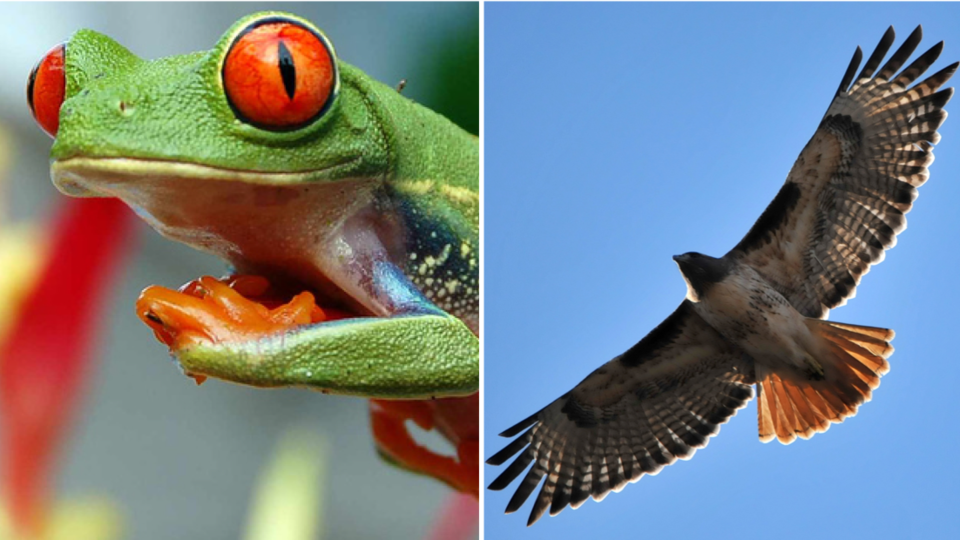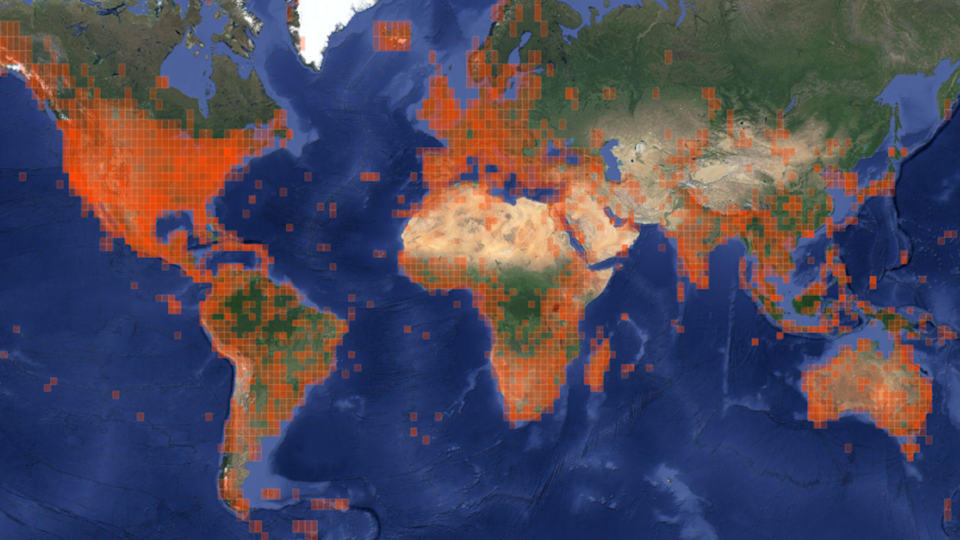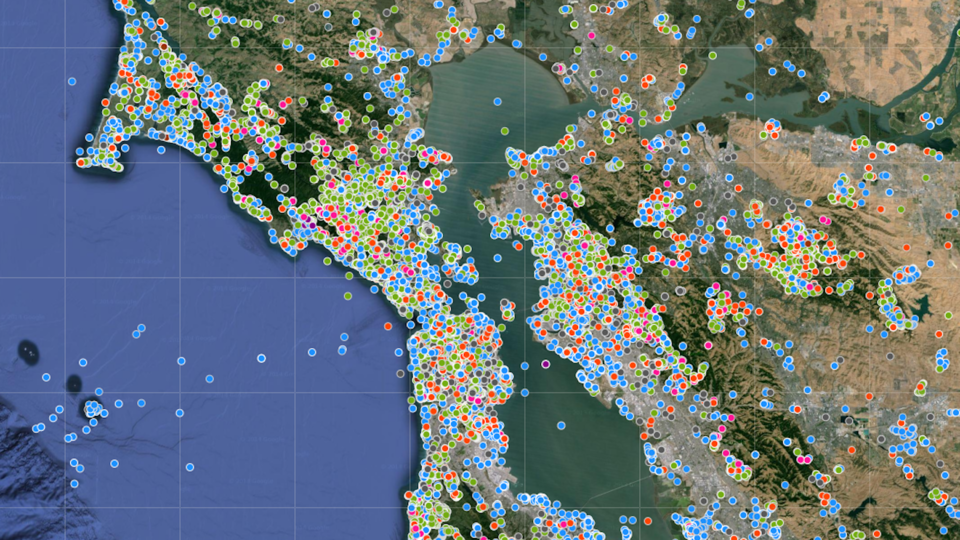The California Academy of Sciences’ naturalist social network gets major revamp
SAN FRANCISCO (November 10, 2014) — This week, iNaturalist.org—the California Academy of Sciences’ online social network for naturalists—launched a new series of easy-to-navigate maps that connect people with the natural world like never before. This living record of Earth’s biodiversity places contributed nature observations on an online map available to anyone with access to the Internet. In a major milestone for the growing field of citizen science, the newly refurbished maps allow iNaturalist users to view more than one million nature observations from around the globe with one simple click.
iNaturalist aims to connect people to nature through technology. Participants snap photos of animals and plants observed in their natural habitats, like lobster mushrooms in Washington State and kiwi birds in New Zealand, and share them with a global online community of naturalists. This international database is populated on searchable maps and made available to citizens and scientists alike. Nature observations appear on maps as colored tiles, and highlight the planet’s biodiversity on an enormous, connected scale.
“Just days ago iNaturalist reached one million observations,” says Scott Loarie, PhD, co-director of iNaturalist. “The new maps summarize all of these contributions, and show that by working together, individual naturalists can create a record of nature bigger than any one person.”
By engaging the public to record their encounters, iNaturalist has generated a massive amount of useable scientific data, providing scientists with new insight on how the distributions of plants and animals are changing with climate and land use. Since its launch in 2008, the app has been accessed by millions of people around the world, with a new observation recorded every 45 seconds. To date, participants have observed more than 50,000 distinct species. Nearly half of the network’s observations—vetted by naturalists and dubbed “Research Grade”—have been incorporated into scientific databases like the Global Biodiversity Information Facility (GBIF). Scientists use these data to better track and understand worldwide change, like spread of exotic diseases or species extinction.
"Tools like iNaturalist enable anyone, anywhere to help fill gaps in our knowledge of species distributions,” says Donald Hobern, Executive Secretary of GBIF. “Now more than ever, this information is critical in helping us understand how modern pressures are affecting wildlife. iNaturalist also fosters a community that helps new and seasoned naturalists to learn from one another, so we have a growing body of people who understand nature better."
iNaturalist officially merged with the Academy in the spring of 2014. While the acquisition marked a new chapter in the Academy's relationship with iNaturalist, the two organizations had a strong track record of working together to achieve common goals since 2011. The platform began as founder Ken-ichi Ueda’s masters project at the UC Berkeley School of Information, a graduate program that aims to expand access to useable, credible information in a high-tech era.
Today, iNaturalist represents a community of more than 60,000 naturalists from around the globe and includes numerous international partnerships. The platform has partnered with the Mexican government's National Commission on the Knowledge and Use of Biodiversity of Mexico since 2012. Their adapted version of the platform, NaturaLista, identifies local taxonomy authorities, national protected areas, common plant and animal names in Spanish, and at-risk and invasive species in Mexico. The New Zealand Bio-Recording Network Trust maintains another iNaturalist adaptation called NatureWatchNZ, while project collaborators from Spain’s Centre de Recerca Ecològica i Aplicacions Forestals wrote much of the software driving the new maps made available today.
"iNaturalist is a platform we believe perfectly complements the Academy's mission to explore, explain, and sustain life," says Meg Lowman, PhD, Chief of Science and Sustainability at the Academy. "Together, we are uniquely positioned to engage the public in citizen science through accessible research with real sustainability outcomes.”
Leveraging its role as both a world-class scientific research institution and leader in environmental education, the Academy plans to foster growth of the iNaturalist platform to inspire more participants from around the globe to connect the natural world.
The Institute for Biodiversity Science and Sustainability at the California Academy of Sciences is at the forefront of efforts to understand two of the most important topics of our time: the nature and future of life on Earth. Based in San Francisco, the institute is home to more than 60 research scientists and aquarium biologists, as well as 45.6 million scientific specimens from around the world—nearly 40,000 of which are alive and on display in the Academy's Steinhart Aquarium. The institute also leverages the expertise and efforts of more than 100 international Research and Field Associates and 300 distinguished Fellows. Through expeditions around the globe, captive breeding programs, and investigations in the lab, the institute's scientists strive to understand the evolution and interconnectedness of life. Through these same efforts, as well as through partnerships, community outreach, and public engagement initiatives, the institute aims to guide critical conservation decisions and address the challenge of sustainability.
Press Contacts
If you are a journalist and would like to receive Academy press releases please contact press@calacademy.org.
Digital Assets
Hi-res and low-res image downloads are available for editorial use. Contact us at press@calacademy.org to request access.


